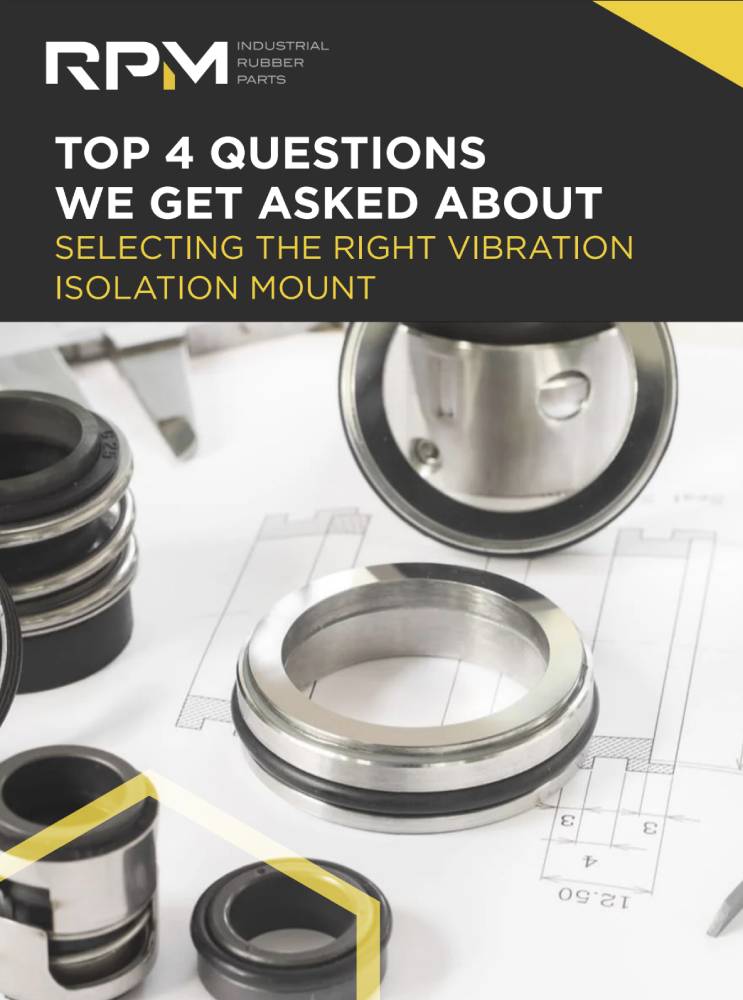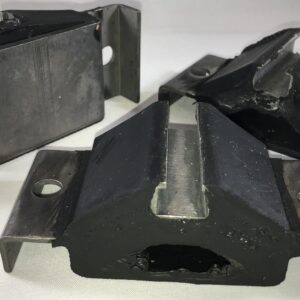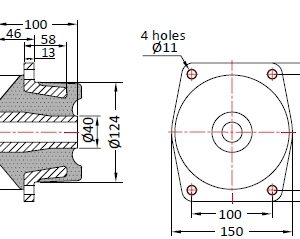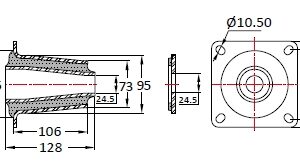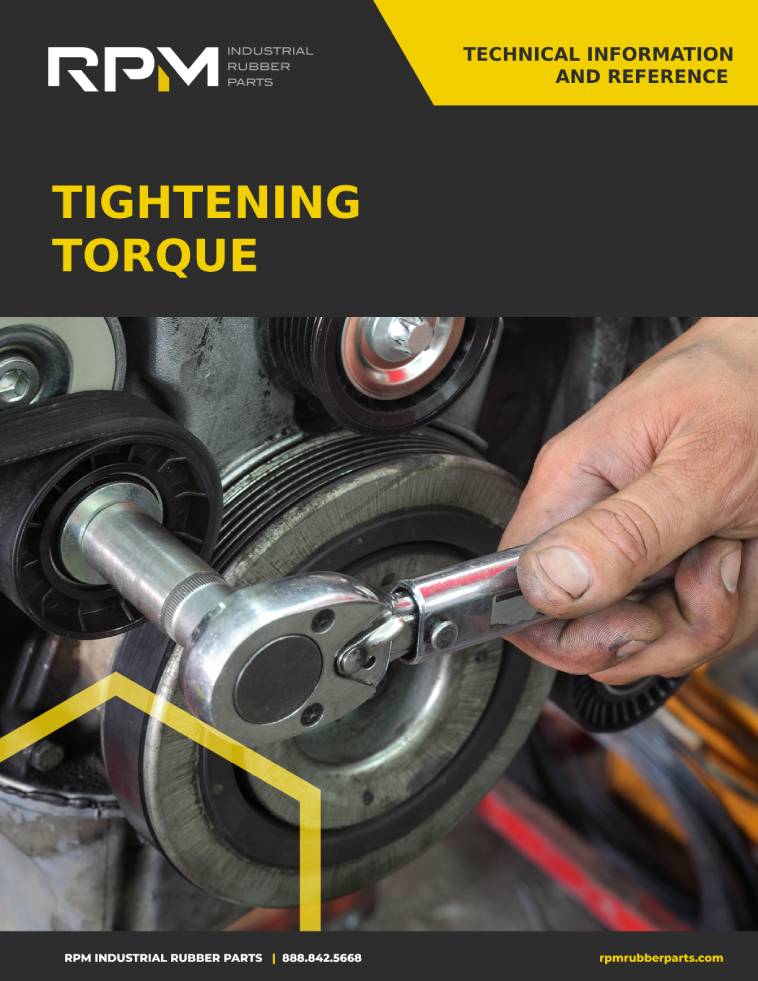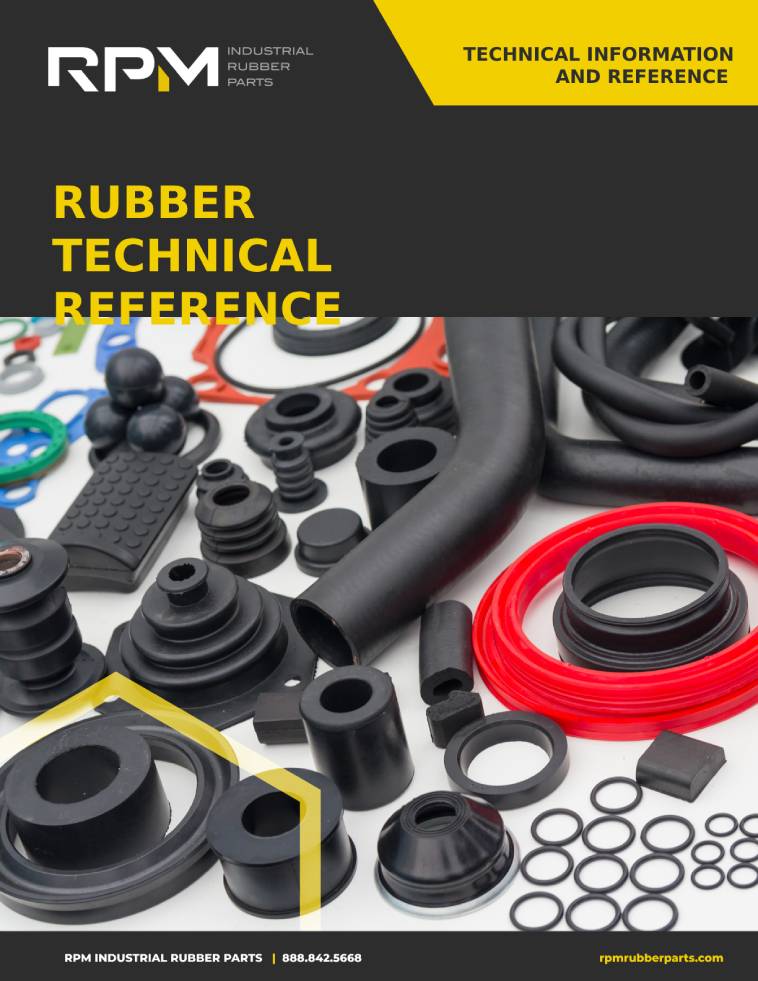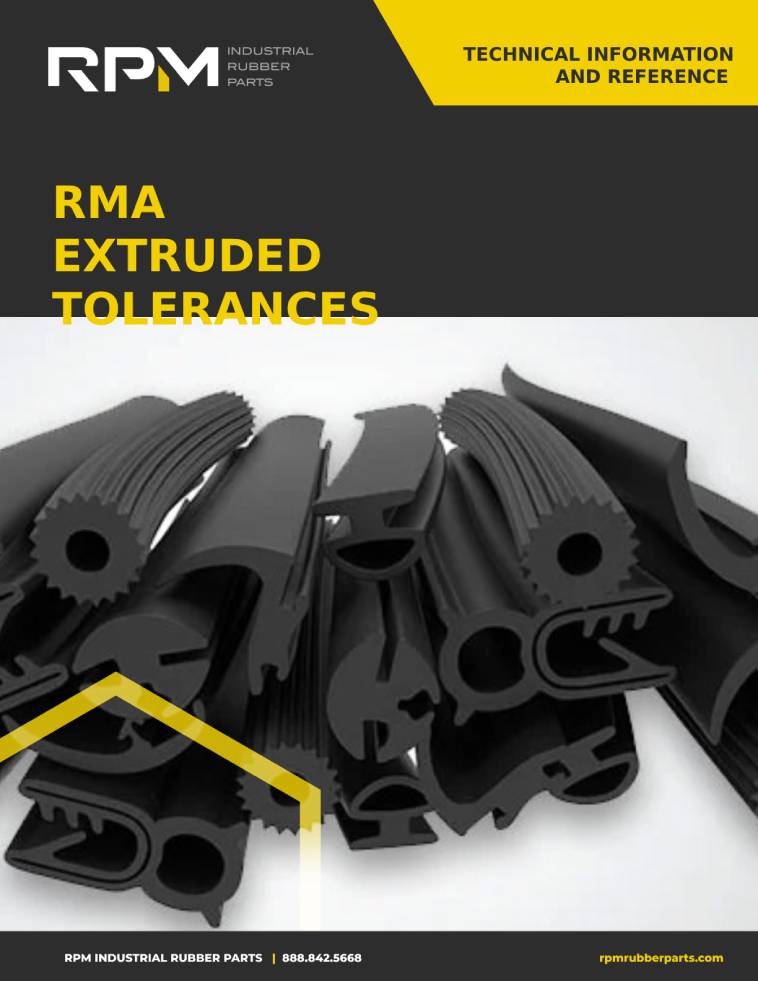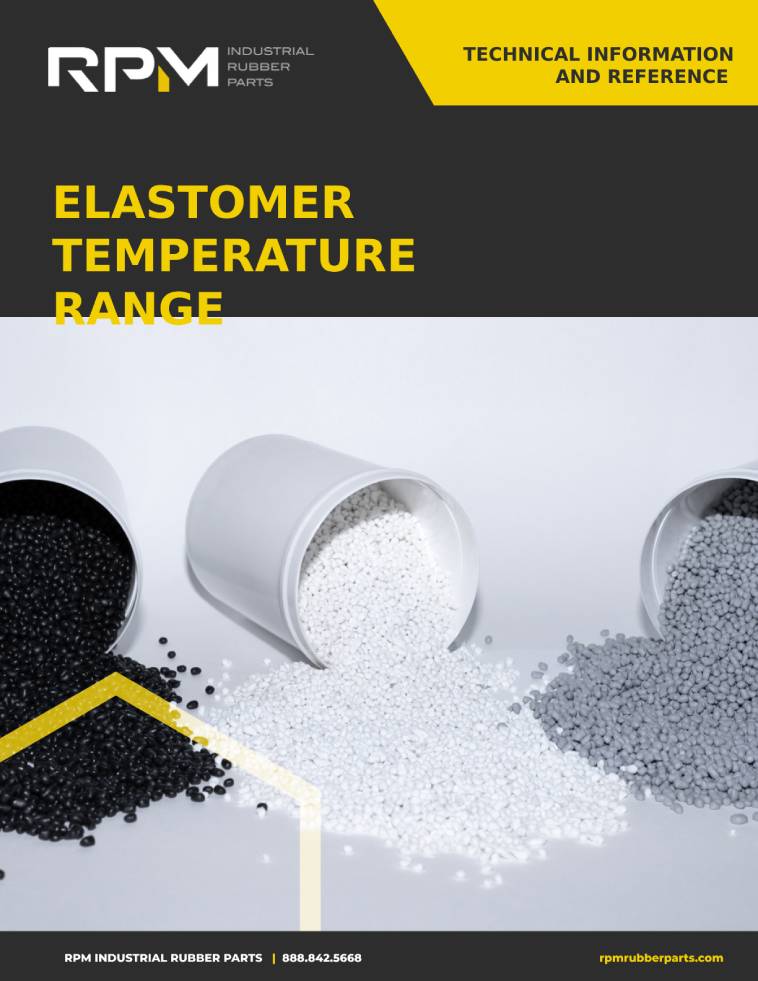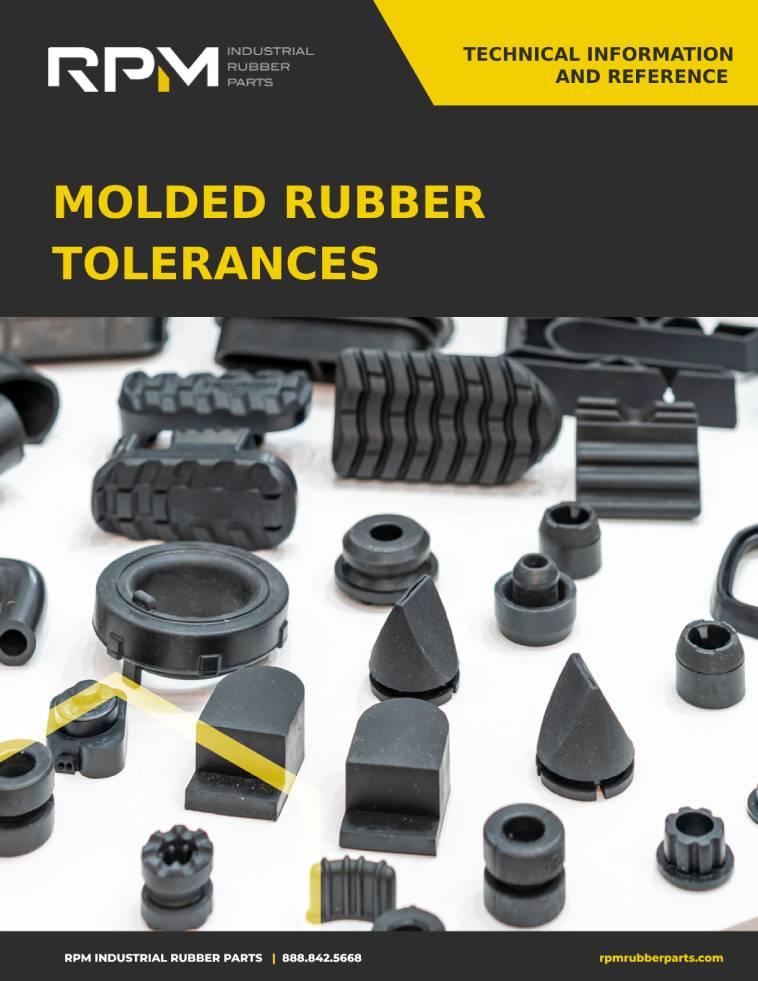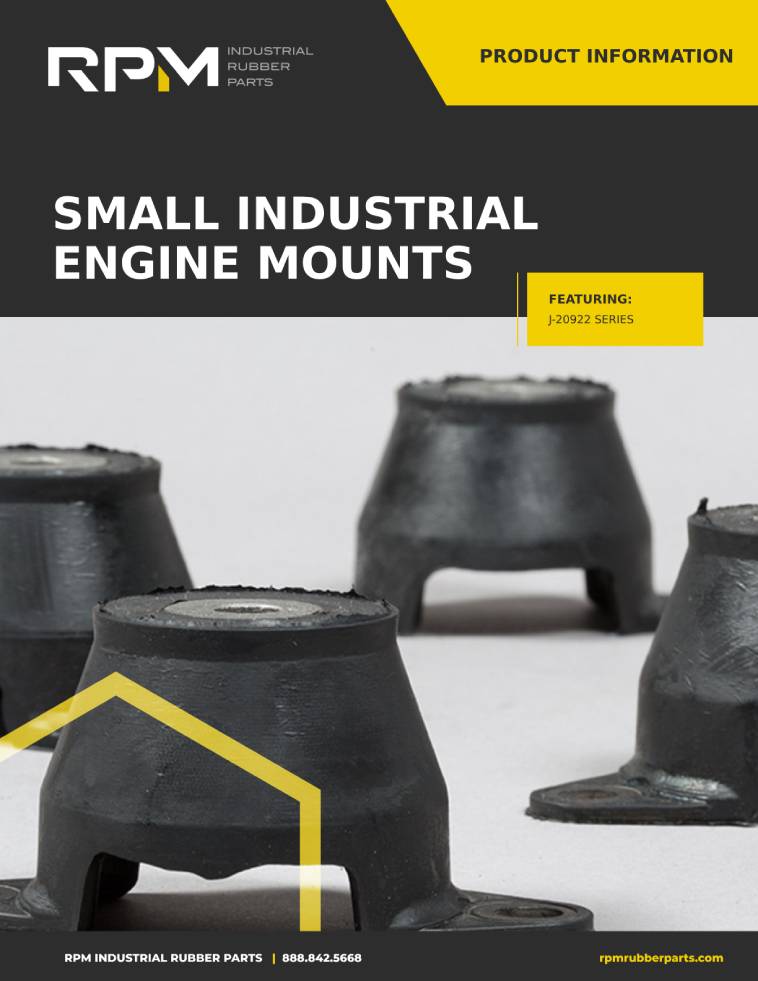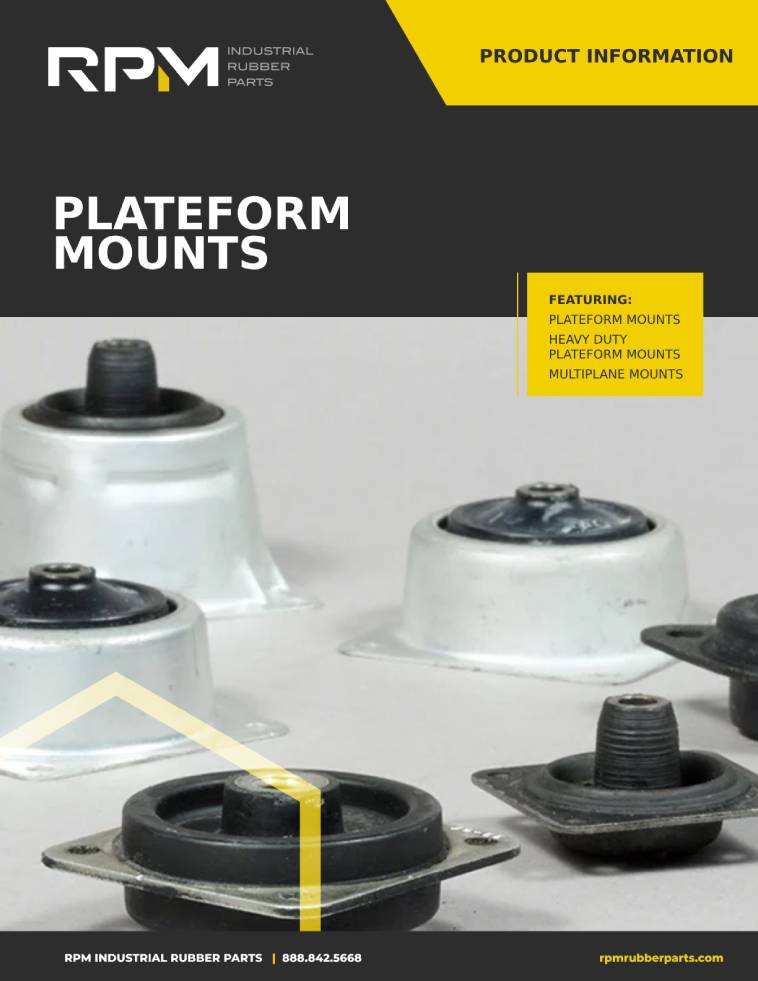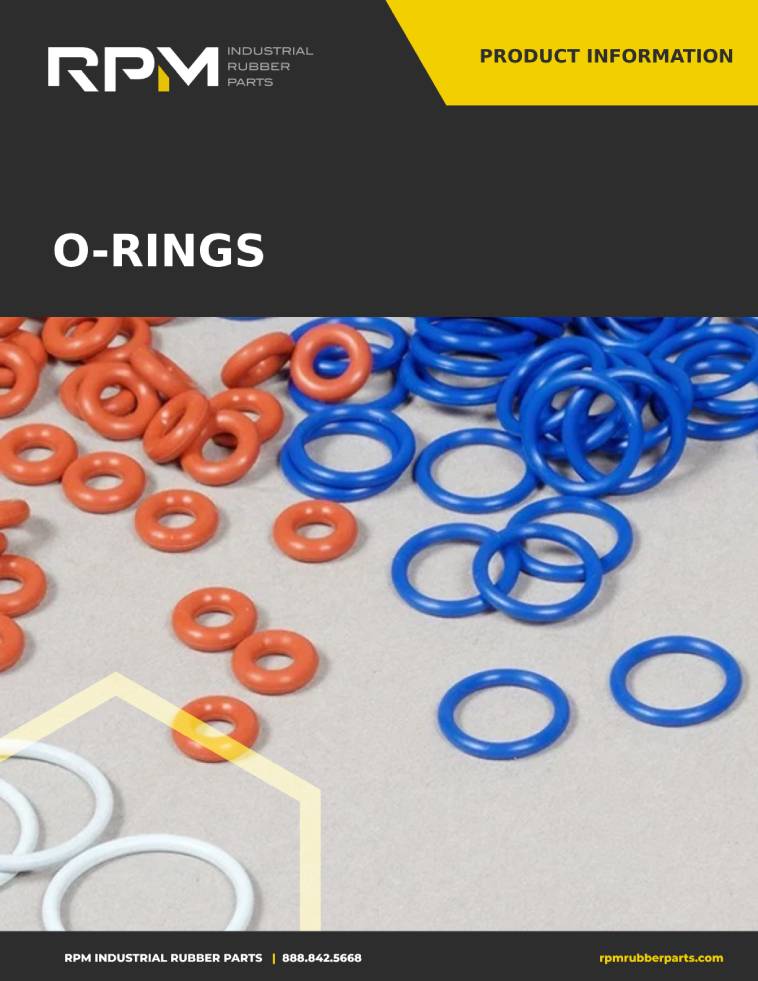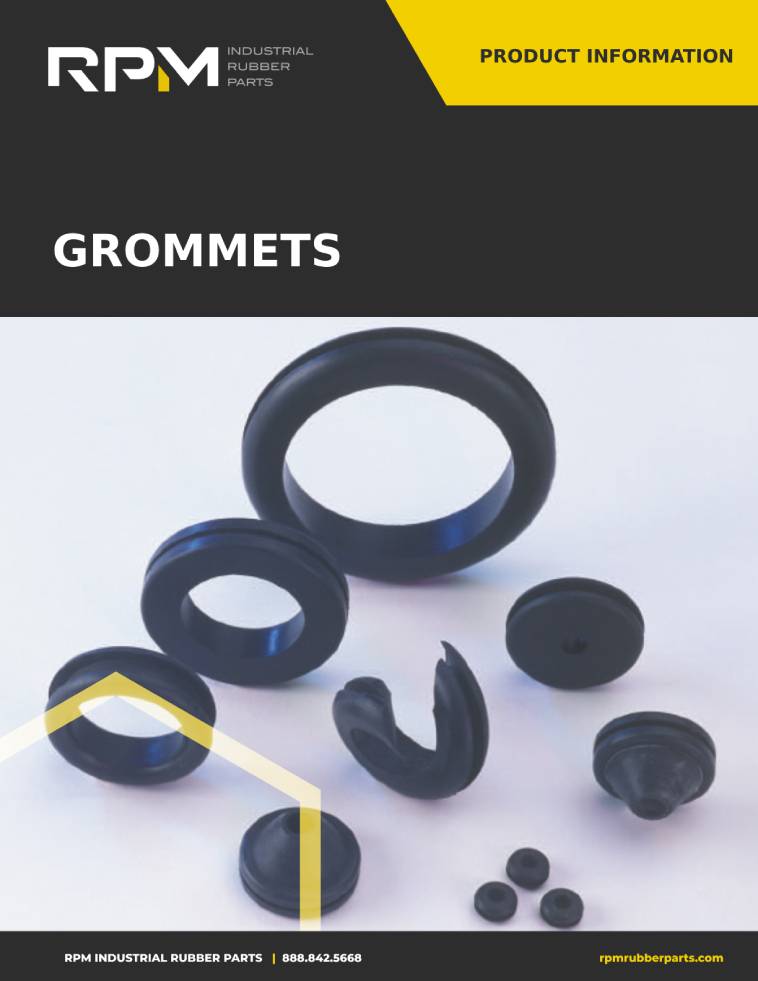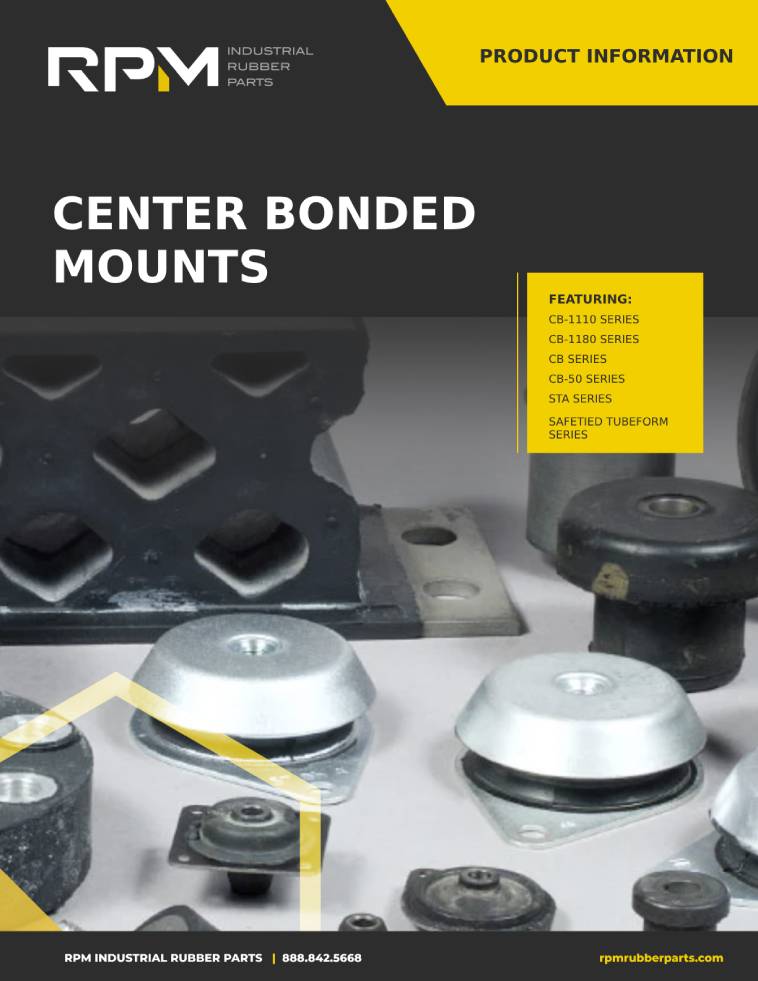Download Our Guide
At the turn of the century, automobiles may have felt like a miracle, but the teeth-rattling, hip-displacing reality of riding one was anything but miraculous. Many early machines wore out fast or were replaced entirely because they lacked the technology to control vibration or absorb shock. Complex yet simple solutions are now in place that can protect machinery and the people who operate it.
The smart machines of the modern age aren’t just vehicles of conveyance, they are transforming how we live. Everything from manufacturing to roboticized equipment benefits when unwanted movement is minimized. The parts that accomplish this are typically made from rubber or metal and expertly manufactured for optimal use.
At RPM, vibration control and shock absorption, often referred to as Noise, Vibration and Harshness (NVH) mitigation are part of our stan- dard and custom offerings. There are numerous materials and forms these materials take. Every coupling, mount, isolator, or bushing we make is perfectly engineered for optimal use. Read on for a comparison of the common materials and best options for shock and vibration control.








